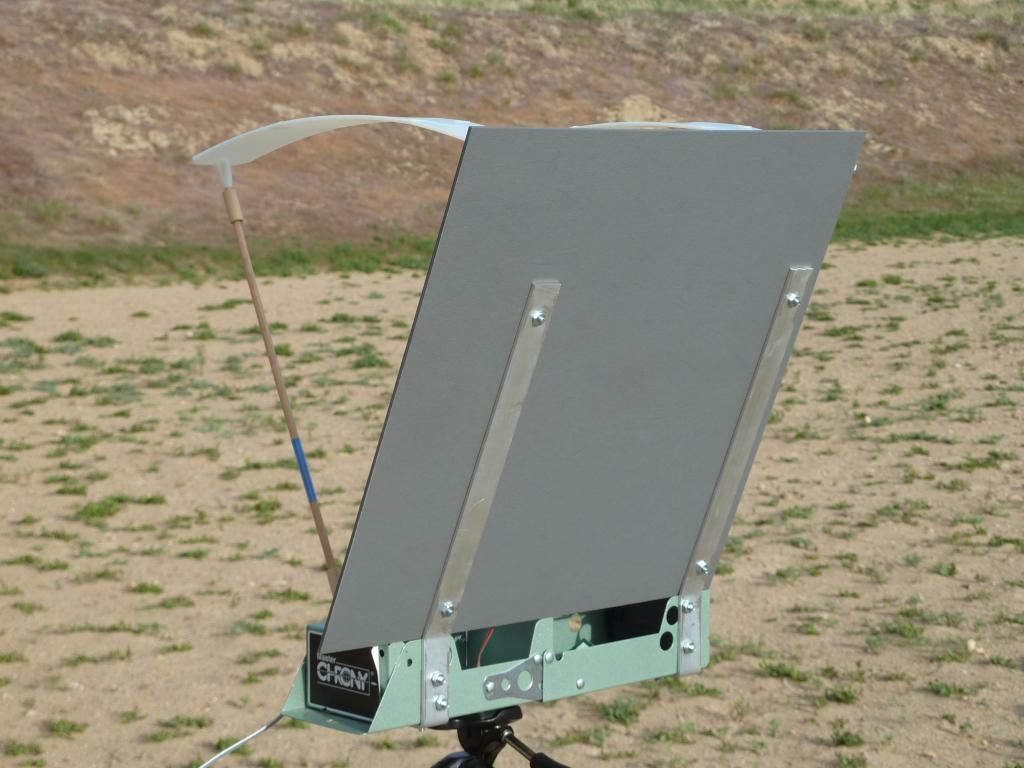Since it appears that I am the first one to reply, I'll jam my response in quick. None of the other responses will be anything like this one!


Royal PITA, these things. I have the Chrony Beta Master and when it comes to measuring the speed of a bullet flying over it, I must say that it seems to do a fine job. But in many other ways, it just plain SUCKS out loud.
Worst thing about it is the interface. The big old red "Merlin" game I had when I was 8 years old had a better and more flexible, more intuitive interface. This little Chrony unit has the computing powder exceeding some third world nations but -YOU- get the pleasure of trying to manipulate that power with three push buttons. Horrendous.
One of the very best uses for a chronograph is to computer Standard Deviation and I won't attempt to explain what
SD is because I can barely grasp the concept myself. But in basic terms, it is a number that "suggests" how likely the next shot will be right in the middle with all the others in velocity.
Many chrono users have expressed the idea that some loads with comparatively lousy SD's can still end up being decent loads, but typically -- loads with great SD's (a low number compared to others) will return great results pretty much all the time.
Here lies my #2 complaint with the entire Chrony line:
The very,
very best way to shake out SD for a load is to shoot many of them and determine the results. If the results are good, the very, VERY best way to dig further in to SD is to
use a larger sample size, as even the most basic scientist would do in -ANY- test.
But no Chrony on the market will ever allow you to do that, limiting you to -10- shots and no more.
If you were working on a drug to cure cancer and you had a box of ten mice with cancer and you injected the drug in to all of them and three of them experienced a full cure, what's the next step? HINT: it's not "start packaging the drug for sale." The next step would be to test 50 mice. Maybe a hundred. If the results continue on a similar trajectory, maybe you'd do a thousand or more.
I'm not saying we should be putting 250 test shots of the same load over a chrono, but being limited to 10 is ludicrous on a little unit with enough computing power to do a hostile corporate takeover.
The Chrony that I have does a fine job of measuring a bullet that flies over it. But it only goes to the range with me once or twice a year. My method has been to develop loads the exact same way I had over the last 23 years BEFORE getting a chrono, and not trying to use the stupid box to help me develop a load. Now, I simply use the stupid box to report back to me how fast the bullet is going, for informational purposes only.
And it didn't take long to notice that owning and using one of these stupid little devices seriously made me want to chase velocities that I otherwise had
NO PARTICULAR REASON TO CHASE except to see what I could come up with. Which, in itself is a fine end-goal if that's what you want to do, but ended up being just a game to me.
For sure, if you are a long distance rifle shooter and you NEED to know velocity for the purpose of bullet drop, you need a chrono for this work. And if you are a competition handgun shooter and you simply have to ensure that you make a certain power factor with a minimum bullet speed, it's necessary.
Me?
I'm a guy that loads 20,000 rounds a year across over 20 different calibers. And if/when I put a nice, big hole through my Chrony (most believe every chrono will eventually take a bullet), I can guarantee that I will not buy another Chrony... and there is a good chance that I won't buy -ANY- replacement chronograph.
One thing that constantly rubs me the wrong way are folks that tell other handloaders that they "need" a chronograph and hint that it is a required tool for making good, or safe (or both) ammo, and that is pure rubbish, plain and simple.

